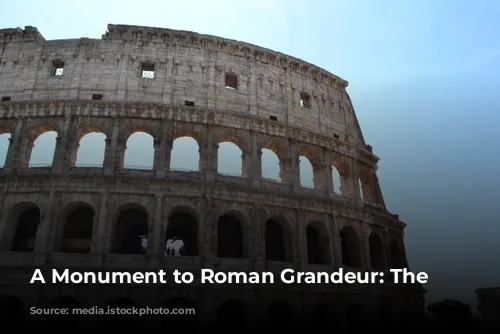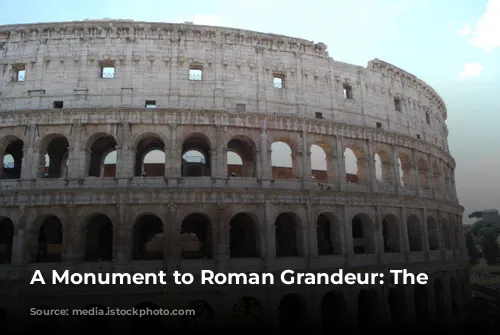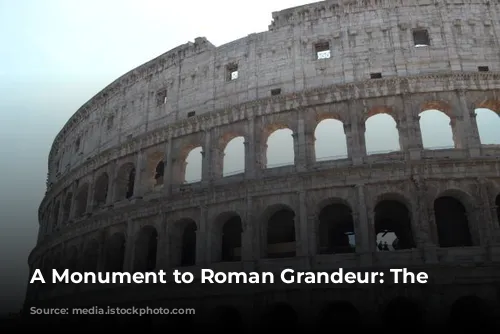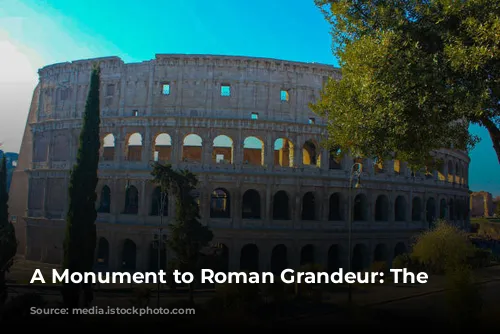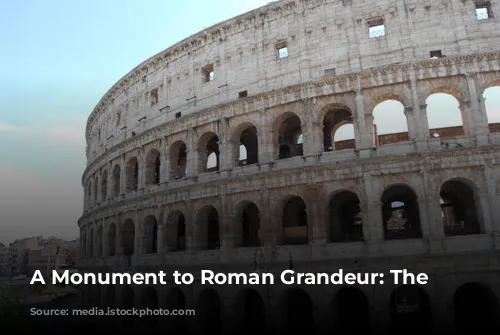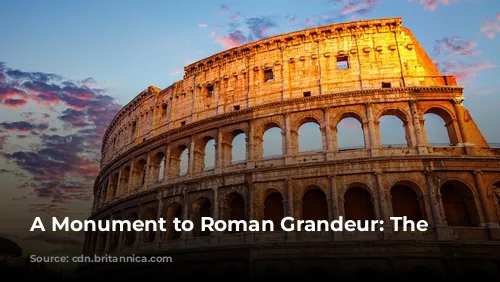The Colosseum, a majestic structure standing tall in Rome, is a testament to the architectural brilliance and engineering prowess of the Roman Empire. This iconic landmark serves as a captivating time capsule, offering visitors a glimpse into the vibrant past of ancient Rome. Beyond its historical significance, the Colosseum plays a vital role in the modern Italian economy, attracting millions of tourists and generating substantial revenue.
The Colosseum, a magnificent amphitheater, holds the title of Italy’s top tourist attraction, drawing in a staggering amount of revenue for the Italian government. In 2018 alone, the Colosseum, Roman Forum, and Palatine Hill collectively generated over $63.3 million (€53.8 million), solidifying its status as a cultural and economic powerhouse.
From Glory to Neglect and Restoration
Despite its enduring grandeur, the Colosseum has witnessed periods of neglect and even destruction. After the fall of the Western Roman Empire, the structure fell into a state of disrepair, its once-glorious features fading into obscurity. During the 12th century, the Frangipane and Annibaldi families, powerful families of the time, repurposed the arena as a fortress, transforming it into a symbol of their own might. Later, in the late 15th century, Pope Alexander VI granted permission for the Colosseum to be used as a quarry, a decision that further accelerated its decline. For over a thousand years, the Colosseum languished, its glory fading into the shadows of time. However, in the 1990s, state-funded restoration efforts were initiated, signaling a renewed commitment to preserving this monumental structure.
A Legacy of Imperial Power
The construction of the Colosseum was a monumental project, reflecting the ambitious spirit of the Roman Empire. It was built during the reign of Emperor Vespasian as part of a grand effort to revitalize Rome after the tumultuous period known as the “Year of the Four Emperors,” a time of political instability and upheaval in 69 CE. Vespasian, driven by a desire to reestablish order and stability, envisioned the Colosseum as a grand entertainment venue, a place where the Roman people could gather for spectacles and celebrations. This colossal amphitheater was designed to host a variety of captivating events, from thrilling gladiator fights and adrenaline-pumping animal hunts to mock naval battles, providing Romans with an unforgettable experience.
A Monument to Engineering Ingenuity
The Colosseum stands as a testament to Roman engineering prowess, a colossal structure built with meticulous planning and skill. Construction of the amphitheater commenced under the watchful eye of Emperor Vespasian between 70 and 72 CE. The completed structure was then dedicated in 80 CE by Titus, Vespasian’s son and successor, marking a significant milestone in Roman history. Further enhancements were made to the Colosseum in 82 CE by Emperor Domitian, who added the fourth story, enhancing its grandeur and stature. The Colosseum was not merely a symbol of Roman power; it was also a symbol of their economic strength. The construction of the arena was financed by the spoils of war, specifically from the sacking of Jerusalem by Titus in 70 CE. The irony is that this magnificent structure was built using the labor of enslaved Jews from Judaea, a stark reminder of the complex dynamics of power and exploitation that shaped the Roman world.
A Glimpse into Roman Life
The Colosseum was not simply a place for entertainment; it was a window into the social, cultural, and political life of ancient Rome. The amphitheater was an elliptical marvel, constructed of stone, concrete, and tuff, rising to four stories at its highest point. This massive structure, measuring 620 by 513 feet (189 by 156 meters), had the capacity to accommodate an astounding 50,000 spectators, a testament to the scale and ambition of Roman society. The Colosseum was most famously known for its gladiatorial combats, where skilled warriors fought each other for the amusement of the masses, their battles a spectacle of courage, strength, and skill.
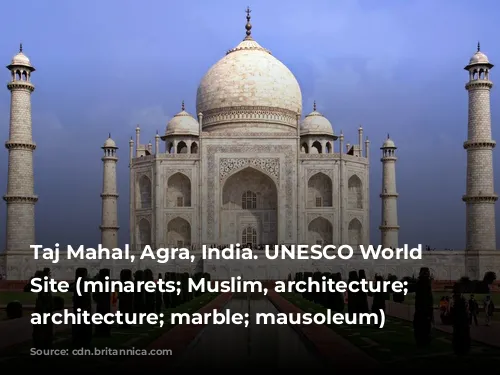
A Symbolic Shift in Power
The Colosseum was more than just a monument; it was a powerful symbol of change and transformation in Roman society. It stood as a testament to the shifting power dynamics within the empire. Located east of the Palatine Hill, on the grounds of Nero’s Golden House, the Colosseum replaced the former emperor’s private lake, a testament to Vespasian’s deliberate choice to replace a symbol of tyranny with a public space for entertainment. This decision was not only practical but also symbolic, reflecting a conscious effort to shift the balance of power from the individual to the collective, from the private to the public.

A Masterpiece of Architecture
The Colosseum was an architectural marvel, a testament to Roman ingenuity. Unlike previous amphitheaters, which were often built into hillsides for structural support, the Colosseum was a freestanding structure, a triumph of engineering and design. It was constructed using a complex system of barrel vaults and groin vaults, creating a structure that was both robust and visually stunning. The Colosseum’s grandeur was further enhanced by its three stories, each adorned with arcades framed by engaged columns in the Doric, Ionic, and Corinthian orders. This architectural masterpiece became a model for Renaissance architects, inspiring them to create their own masterpieces. The Colosseum’s construction was a testament to Roman resourcefulness and ingenuity, a fusion of natural materials like travertine and volcanic tufa and innovative building techniques like concrete, resulting in a structure that has stood the test of time.

A Thriving Center of Entertainment
The Colosseum was a vibrant center of entertainment, a stage for a wide array of spectacles that captivated the hearts and minds of the Roman people. The amphitheater was designed to shield its spectators from the sun using a massive retractable velarium, an awning supported by masts extending from the Colosseum’s top story. Hundreds of Roman sailors were responsible for manipulating the rigging, a testament to the elaborate logistics required to ensure the comfort and enjoyment of the crowd. Within the Colosseum’s walls, gladiators clashed in hand-to-hand combat, their skills and bravery on full display. Men and animals engaged in fierce contests, showcasing the power and ferocity of the natural world. The Colosseum even witnessed mock naval engagements, creating a mesmerizing illusion of water battles within its stone confines. However, despite its enduring popularity, the debate continues about whether the Colosseum was the site of the martyrdom of early Christians, a question that continues to intrigue historians and scholars.
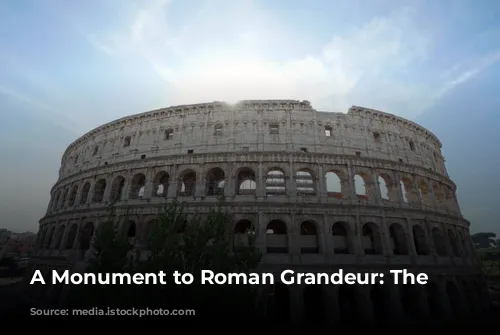
From Glory to Decay and Rebirth
The Colosseum, like many other ancient structures, has endured a tumultuous history. During the medieval period, the amphitheater was repurposed as a church, its grandeur overshadowed by religious devotion. Later, it served as a fortress for the Frangipane and Annibaldi families, becoming a symbol of their power and influence. Unfortunately, the Colosseum suffered from a combination of natural disasters, including lightning strikes and earthquakes, as well as human neglect. Vandalism and pollution left their mark, contributing to the erosion of the structure’s beauty. Over a thousand years, the Colosseum was treated as a quarry, its marble seats and decorative materials stripped away for use in other projects. Fortunately, the Colosseum received renewed attention in the 19th century, with preservation efforts spearheaded by Pius VIII. In the 1990s, a comprehensive restoration project was launched, signaling a renewed commitment to preserving this monumental structure.
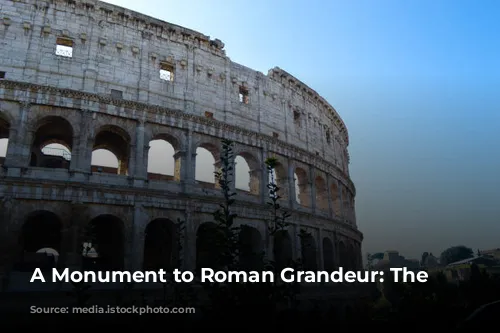
A Living Legacy
The Colosseum continues to stand tall as a symbol of Roman grandeur, a living legacy that connects us to the ancient world. Today, it remains one of Rome’s most popular tourist destinations, drawing in close to seven million visitors annually. The Colosseum serves as a platform for understanding the rich culture and history of ancient Rome, with changing exhibitions showcasing artifacts and insights into this fascinating era. This iconic landmark not only serves as a source of tourism revenue but also as a catalyst for historical understanding and appreciation. As we wander through the Colosseum’s ancient corridors, we are transported back in time, immersing ourselves in the stories of a civilization that shaped the course of history. The Colosseum is more than just a monument; it is a portal to the past, a reminder of the enduring power of human ingenuity and the enduring legacy of the Roman Empire.
